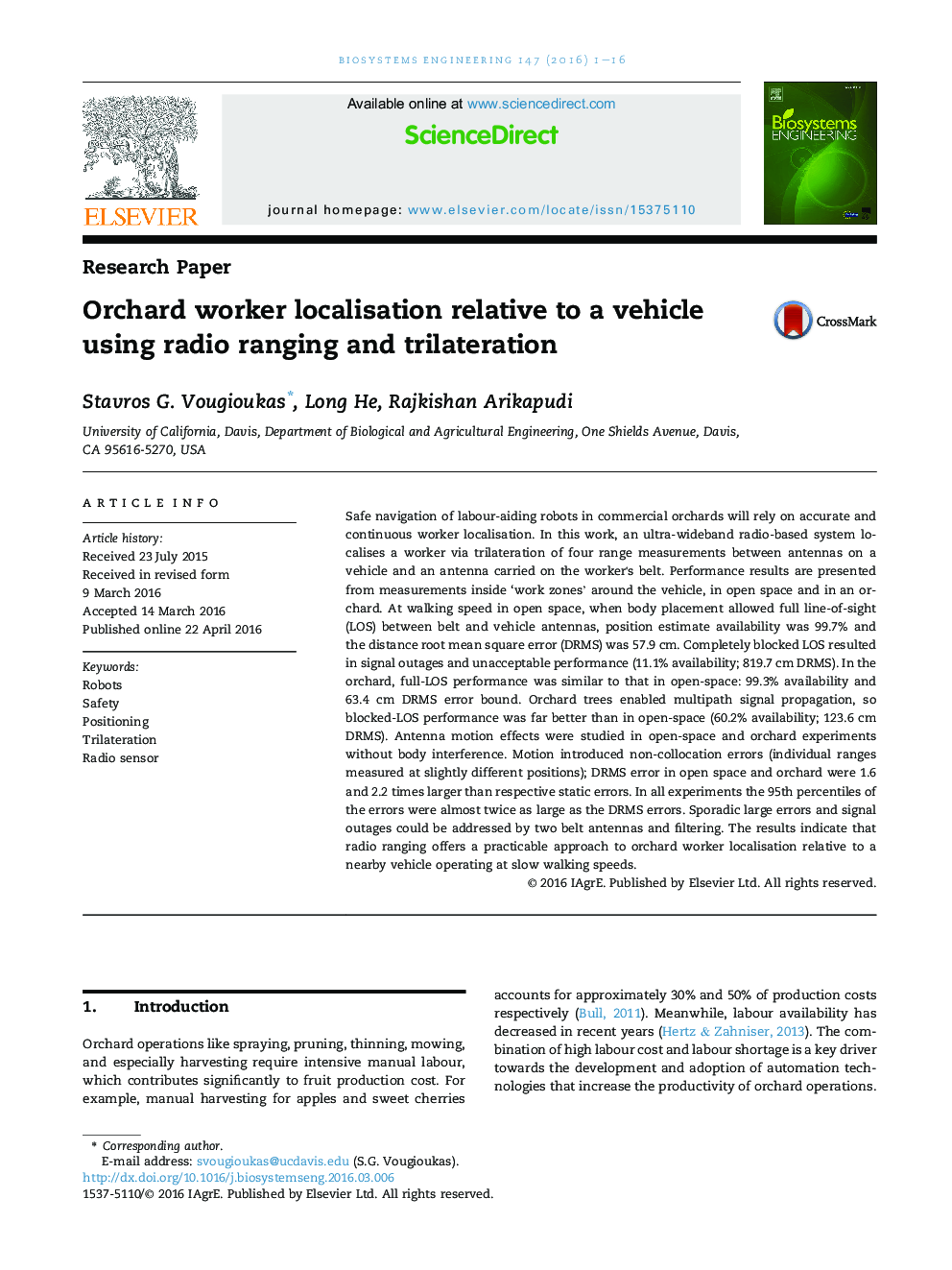| کد مقاله | کد نشریه | سال انتشار | مقاله انگلیسی | نسخه تمام متن |
|---|---|---|---|---|
| 1710793 | 1519514 | 2016 | 16 صفحه PDF | دانلود رایگان |
• Ultra-wideband vehicle radios localise orchard worker's antenna via range trilateration.
• Dynamic error up to 2.2 times the static, due to non-collocated range measurements.
• Walking in orchard with antenna Line-of-Sight: 99.3% availability, 63.4 cm RMS error.
• Walking in orchard with no Line-of-Sight: 60.2% availability, 123.6 cm RMS error.
• 95% error was much larger than RMS; filtering and two belt antennas seem necessary.
Safe navigation of labour-aiding robots in commercial orchards will rely on accurate and continuous worker localisation. In this work, an ultra-wideband radio-based system localises a worker via trilateration of four range measurements between antennas on a vehicle and an antenna carried on the worker's belt. Performance results are presented from measurements inside ‘work zones’ around the vehicle, in open space and in an orchard. At walking speed in open space, when body placement allowed full line-of-sight (LOS) between belt and vehicle antennas, position estimate availability was 99.7% and the distance root mean square error (DRMS) was 57.9 cm. Completely blocked LOS resulted in signal outages and unacceptable performance (11.1% availability; 819.7 cm DRMS). In the orchard, full-LOS performance was similar to that in open-space: 99.3% availability and 63.4 cm DRMS error bound. Orchard trees enabled multipath signal propagation, so blocked-LOS performance was far better than in open-space (60.2% availability; 123.6 cm DRMS). Antenna motion effects were studied in open-space and orchard experiments without body interference. Motion introduced non-collocation errors (individual ranges measured at slightly different positions); DRMS error in open space and orchard were 1.6 and 2.2 times larger than respective static errors. In all experiments the 95th percentiles of the errors were almost twice as large as the DRMS errors. Sporadic large errors and signal outages could be addressed by two belt antennas and filtering. The results indicate that radio ranging offers a practicable approach to orchard worker localisation relative to a nearby vehicle operating at slow walking speeds.
Journal: Biosystems Engineering - Volume 147, July 2016, Pages 1–16
